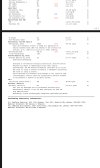OK, I will contribute a bit more to this thread since
@All Nats McGee contributed so well.
For relief of joint pain from nandolone, there are two primary mechanisms by which nandrolone may elicit relief: increased collagen deposition in synovial joints, or synovial joint fluid retention.
A lot of research on AAS such as nandrolone, stanozolol, oxandrolone, tends to show increases in some markers of general collagen synthesis.
All we'd really care about for this particular matter, is either direct measures on human synovial joints of collagen deposition, or perhaps a single relevant marker, specifically procollagen Type III N-terminal propeptide (PIIINP) which is a marker of interstitial fibril biosynthesis in soft tissues. There's evidence with rhGH on increased PIIINP activity, but so far as I can tell, it's never been measured in humans with nandrolone.
There are various other collagen markers, basically, type I and type II collagen, bone ALP, these are useless for this matter. These reflect osteoblastic bone formation, soft tissue turnover, and are more likely (i.e., stanozolol) to demonstrate skin fibroblast activity rather than synovial joint activity.
From what I can gather from the non-human evidence so far published on this, the system that nandrolone is likely to function through to effect both increased collagen deposition in synovial joints and synovial joint fluid retention is the RAS (renin-angiotensin system).
Both mechanisms (increased collagen production in i.e. flexor tendon) and synovial joint fluid retention may be positively acted upon by the renin-angiotensin system (RAS). The RAS regulates water and electrolyte balance, connective tissue cell growth, and the metabolism of loose and dense connective tissue and sites of tissue repair [1]. Pathologically, RAS activation increases vascoconstriction, cardiac hypertrophy, and fibrosis (resulting in myocardial infarction, fibrosis of the liver) [1]. Therefore, it is important to consider the duality of the potential joint (i.e., knee extensor tendon) augmentation while on nandrolone: you may have a transient benefit in tendon remodeling (i.e., extensor tendon), but via this same mechanism, may be accruing fibrotic or cardiac/left ventricular maladaptations.
So, to the potential transient benefits: Angiotensin-I converting enzyme (ACE) is a marker positively correlated with collagen type I mRNA activity reflective of deposition of Type I collagen, followed by mineralization and maturation during which stable cross-links are formed between collagen fibrils, and may reflect ECM remodeling wherein collagen synthesis outstrips degradation.
Whereas AAS generally decrease matrix metalloproteases (MMP), collagen gene expression, nandrolone increases ACE activity and increases matrix type I collagen deposition. The results of [1] showed Nand + jump training >> Nand > jump training > sedentary in ACE activity in tendon (i.e., knee extensor). Consider, however, that this same pathway is implicated in cardiac tissue remodeling and pathological action.
References:
[1] Marqueti, R. de C., Hashimoto, N. Y., Durigan, J. L. Q., Batista e Silva, L. L., Almeida, J. A. de, Silva, M. da G. da, … Araújo, H. S. S. de. (2015). Nandrolone increases angiotensin-I converting enzyme activity in rats tendons. Revista Brasileira de Medicina Do Esporte, 21(3), 173–177. doi:10.1590/1517-869220152103143667


